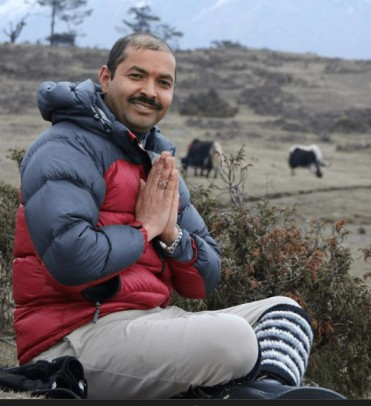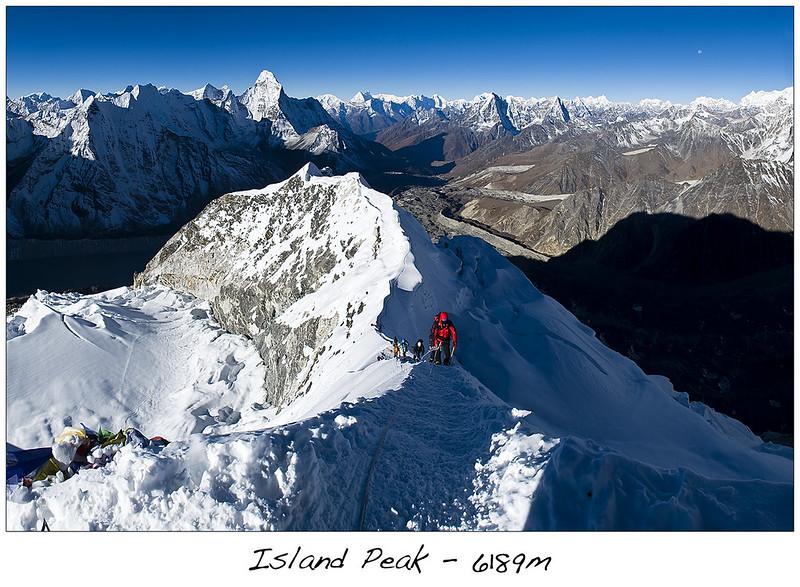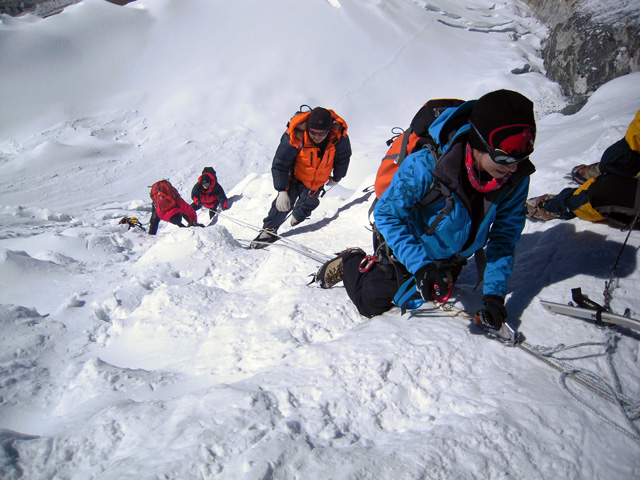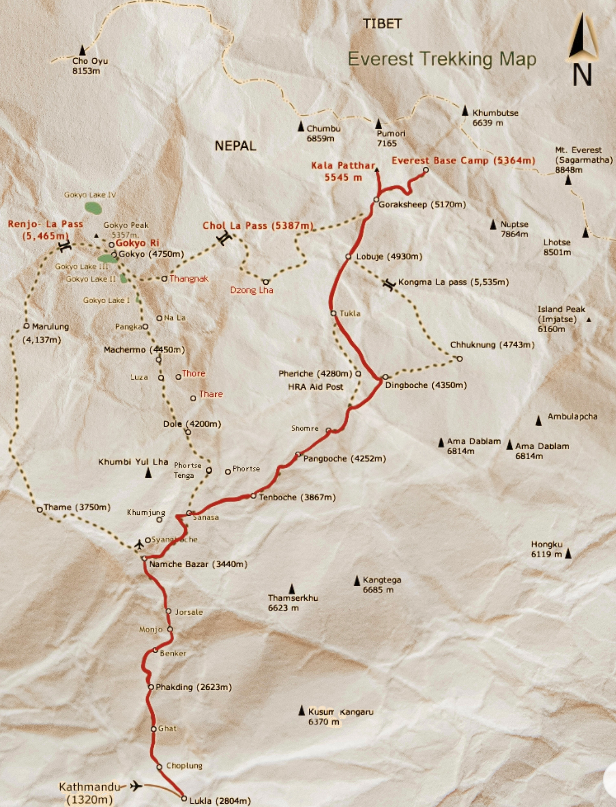At a Glance
17Days
2-80
Peak Climbing
Hotel, Lodge & Guest House
Overview
Island Peak, also known as Imja Tse, is a popular climbing peak in Nepal's Khumbu region. The peak stands at an altitude of 6,189 meters (20,305 feet) and offers stunning views of the surrounding Himalayan Mountains.
Island Peak climbing is considered a challenging but rewarding experience. The climb requires technical skills such as glacier travel, steep snow and ice climbing, and the use of crampons and ice axes. Therefore, it is recommended that climbers have prior mountaineering experience before attempting this peak. The climbing season for Island Peak is from April to May and September to November, which are the best times to climb due to favorable weather conditions. The climb typically takes around 16-20 days, which includes acclimatization and trekking to and from the peak.
The journey to Island Peak starts with a scenic flight to Lukla, followed by a trek to Namche Bazaar, the gateway to the Khumbu region. The trek continues to Tengboche, Dingboche, and finally to Chhukung, which is the base camp for Island Peak. From Chhukung, climbers will start the climb by crossing the Imja Khola and ascending to the Island Peak Base Camp. The climb to the summit includes traversing a glacier and climbing steep snow and ice slopes to the summit ridge. From the summit, climbers can enjoy panoramic views of the Himalayas, including Mt. Everest, Lhotse, Nuptse, and Ama Dablam.
Island Peak climbing is a challenging and rewarding experience for experienced mountaineers who are looking for a new challenge in the Himalayas. The stunning views, technical climbing, and cultural experience make this climb a must-do for adventurous climbers.
Important Note
Island Peak climbing is a challenging activity that requires prior mountaineering experience and physical fitness. Climbers should also be aware of the risks associated with high-altitude mountaineering, including altitude sickness, hypothermia, and frostbite. It is important to have proper gear and equipment and to follow the guidance of experienced guides and Sherpas. Additionally, climbers should respect the local culture and environment and follow the principles of responsible tourism.
Itinerary
Day 1
After arriving at the Tribhuvan International Airport in Kathmandu, you will be picked up by a representative of the Adventure Club and transferred to your hotel. The rest of the day is free for you to explore the vibrant city of Kathmandu.
Day 2
Early morning flight to Lukla, followed by a three-hour trek to Phakding. You will get your first glimpse of the Himalayas and the Dudh Kosi River during the trek.
Day 3
The trek from Phakding to Namche Bazaar is a gradual ascent that takes you through the Sagarmatha National Park. You will get to experience the unique culture and traditions of the Sherpa people in Namche Bazaar.
Day 4
This is a rest day to allow your body to acclimatize to the high altitude. You can spend the day exploring the colorful markets and monasteries of Namche Bazaar.
Day 5
The trek from Namche Bazaar to Tengboche takes you through dense forests and offers stunning views of Mt. Everest, Lhotse, and Ama Dablam.
Day 6
The trek to Dingboche is a gradual ascent that takes you through the Imja Khola Valley. You will get to see the picturesque villages of Pangboche and Somare before reaching Dingboche.
Day 7
Another rest day to acclimatize to the high altitude. You can spend the day exploring the beautiful valleys and glaciers surrounding Dingboche.
Day 8
The trek from Dingboche to Chukhung is a short and gradual ascent that takes you through the Imja Valley. You will get your first glimpse of Island Peak during the trek.
Day 9
The climb to Island Peak Base Camp is a steep ascent that requires technical mountaineering skills. You will be camping at the base camp for the night.
Day 10
This is a rest day to acclimatize to the high altitude and receive training from your guides on the technical aspects of the climb.
Day 11
The climb to Island Peak High Camp is a steep ascent that requires the use of ropes and crampons. You will be camping at the high camp for the night.
Day 12
Summit day is a challenging and technical climb that requires stamina and mountaineering skills. You will be rewarded with stunning views of the Himalayas from the summit before descending to Chhukung.
Day 13
The trek back to Namche Bazaar takes you through the scenic trails of the Khumbu region, and you can enjoy the beautiful views of the Himalayan mountains.
Day 14
The trek back to Lukla is a long and gradual descent that takes you through beautiful forests and villages. You will get to say goodbye to the Sherpa people and culture before reaching Lukla.
Day 15
You will take an early morning flight back to Kathmandu and transfer to your hotel. The rest of the day is free for you to relax or explore the city.
Day 16
The day will be spent on a city tour in Kathmandu. You will explore in World Heritages side such as Swayambhunath Stupa, Patan Durbar Square, Pashupatinath Temple, and Baudhanath Stupa. In the evening you will back to the hotel.
Day 17
The trip comes to an end, and you will be transferred to the airport by our representatives for your departure flight back home.
Faqs
Island Peak, also known as Imja Tse, is a popular climbing peak in Nepal's Khumbu region. It stands at an altitude of 6,189 meters (20,305 feet) and offers stunning views of the surrounding Himalayan Mountains.
The climb to Island Peak typically takes around 16-20 days, which includes acclimatization and trekking to and from the peak.
The best time to climb Island Peak is from April to May and September to November, which are the months with the most favorable weather conditions.
Yes, Island Peak climbing requires prior mountaineering experience and technical skills such as glacier travel, steep snow and ice climbing, and the use of crampons and ice axes.
Climbers will need proper mountaineering gear and equipment, including a warm sleeping bag, down jacket, gloves, helmet, harnesses, crampons, and ice axe. It is important to consult with experienced guides and Sherpas for a complete gear and equipment list.
High-altitude mountaineering carries several risks, including altitude sickness, hypothermia, and frostbite. Climbers should be aware of these risks and take necessary precautions to ensure their safety.
Island Peak climbing requires experienced guides and Sherpas who can provide the necessary guidance and support during the climb. It is not recommended to attempt this peak independently.
The cost of Island Peak climbing varies depending on several factors, including the number of climbers, the duration of the climb, and services provided by the trekking company. It is important to consult with trekking companies and compare prices before booking the climb.
Preparing for Island Peak climbing involves physical fitness training, acclimatization, and practicing technical mountaineering skills. It is important to consult with experienced guides and Sherpas for a complete preparation plan.






